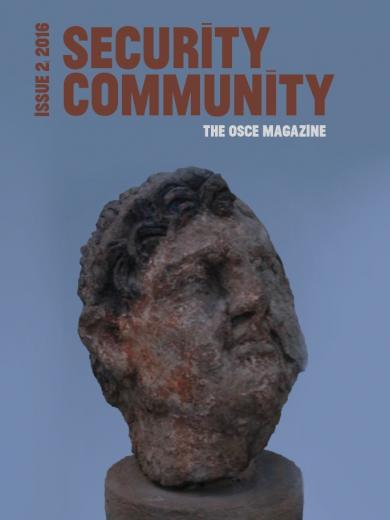Why Archaeological Sites are Crime Scenes
By Konstantinos-Orfeas Sotiriou
Like most people, I am used to seeing scenes in TV series such as CSI where a crime has been reported and the police immediately arrive at the site, sealing it off with those yellow strips and prohibiting entry. But what does that have to do with archaeology? In the following article, a bizarre connection between archaeology and crime scenes will be unveiled.
The 18th and 19th centuries were a time when a handful of wealthy people started to be interested in ancient objects from lost civilizations. This was the beginning of archaeology as a science. Inspired by myths and legends, the first pioneer archaeologists conducted expensive and dangerous expeditions to exotic places to dig under difficult circumstances, with only one goal: to find the objects of those mythical civilizations that they had heard about through stories. But were they really the first archaeologists?
Back in ancient Egypt during the Middle Kingdom, during the Ur III Period in Mesopotamia, during the Minoan and Mycenaean Periods in Greece, ancient looters were also digging with a passion: to find gold and precious stones inside the graves of great kings. So, one could ask, what is the difference between looters and archaeologists?
Throughout the 20th century, archaeological excavations unearthed some of the most exquisite palaces, houses, graves and complexes of humanity’s great past. Slowly but surely, interdisciplinary approaches were introduced to archaeology, and soon the concept of archaeological context gained great importance. By the term “context” we mean all the different forms of evidence that exist inside an undisturbed layer.
When an ancient house or building has collapsed after an earthquake or was burned down by conquerors, the remaining debris, if undisturbed, can provide valuable pieces of evidence: pottery, tools, furniture, vessels, cesspits and coins. Using the proper tools, digging meticulously layer after layer and transferring all the information uncovered to an archaeological diary, archaeologists can re-create the story behind this forgotten place. A variety of questions can then be answered. Who were the inhabitants? Were they Amorites, Minoans, Phoenicians, Egyptians, Greeks? What was their main occupation? Through coins, archaeologists can date with extreme precision the period when the story took place. A careful examination of the pottery can reveal the source of their supply of clay. Non-local pottery could reveal relations with other cultures and places thousands of miles away and burned grains inside vessels and cesspits could reveal eating habits.
Someone might argue that looters are doing the same job as archaeologists. But looters are motivated neither by science nor by the study and revival of the past but by profit. Their only motive is the prospect of selling the objects they find – golden rings, clay vessels and idols, ivory objects, swords, shields, helmets and coins – to wealthy buyers. They do not use proper methods, which require careful digging, inch by inch, using the right tools and documenting the whole procedure. Instead they use destructive tools and methods, as they have no time to spare in pursuing their illegal aims. Sometimes they even use big bulldozers, as in one case that was reported to the Department for Combating Smuggling in Antiquities in Athens in 2000. No doubt their methods allow them to find the objects they seek, but during the process they destroy all the rest of the evidence that is so important for us archaeologists.
Great archaeological museums like the Louvre in Paris, the British Museum in London, the Kunsthistorisches Museum in Vienna and the National Museum in Athens advertise their exhibitions focusing mainly on objects that symbolize wealth and power. Tutankhamun’s mask, Agamemnon’s mask, Aphrodite’s marble statue and golden swords dating back to the Mycenaean Period are excellent artefacts. But in a way they distort the visitors’ understanding of what archaeology really means.
Archaeology is the only way humanity has to rebuild its past. A past without any written evidence, dating far back to the Neolithic Period, the Bronze Age Period and the Iron Age. A past that belongs to all of humanity, not to any single nation, and certainly not to the looters who seek only profit. A great past revealed through careful scientific excavation and research, that obliterates the boundaries separating nations and reveals the greatness of our common ancestors. Ancestors who managed to control rivers and through irrigation provided water for their people, who built towns back in 3,500 BC with separate commercial and religious parts. Ancestors who used the natural flow of the Nile and the Tigris and the Euphrates to transport objects from distance places. Ancestors who conducted marriage contracts in 2,000 BC, wrote literature and shared tales such as the Gilgamesh Epic.
Imagine chlorine being thrown onto a crime scene. No fingerprints, no drops of blood, no physical evidence, neither from the victim nor from the perpetrator, nothing would remain for forensic researchers to use as evidence to reconstruct the facts and answer questions regarding the crime committed. In the same way, looters are destroying humanity’s great past, our global past, which has yet to be revealed. An enormous number of questions are still waiting to be answered. The means for fulfilling this complex task is and always was archaeology. Being a police officer and an archaeologist has made me realize that an archaeological site has to be treated according to the same principles as a crime scene. Both are in need of our greatest protection and most thorough examination.
Konstantinos-Orfeas Sotiriou is a Sergeant in the Greek Police Force’s department against antiquities smuggling and an archeological researcher at the National and Kapodistrian University of Athens.
Welcome to Security Community
Security Community is the OSCE’s online space for expert analysis and personal perspectives on security issues.
The views expressed in the articles are those of the authors and do not necessarily reflect the official position of the OSCE and its participating States.


